No. 21
Protect against pet damage
Don’t let beloved pets wreck your beloved home
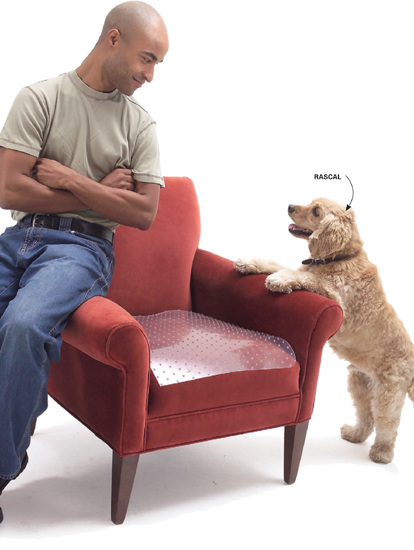
Keep them off the furniture
Lay a plastic carpet protector—prickly side up—on seats to train pets to stay off. Carpet protectors are available at office supply stores. Aluminum foil often works, too. Some pets find the feel and sound of foil intolerable.
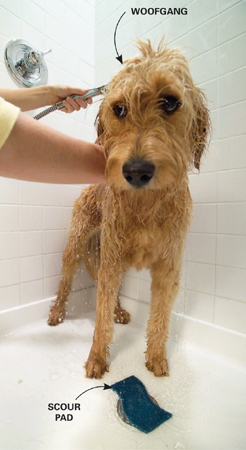
Prevent clogged drains
If you wash your pooch in a sink, tub or shower, you’re begging for a furry drain clog. To avoid that, you can buy a drain screen at a discount store. Or you can simply cover the drain with a scouring pad. It will catch the fur but let water flow down the drain. To protect a tub drain, stuff the pads under the open stopper.
Rescue the carpet
If your pet has an accident on the carpet, act fast. Urine can damage fibers and even change the color of carpet. The longer you wait, the greater that risk.
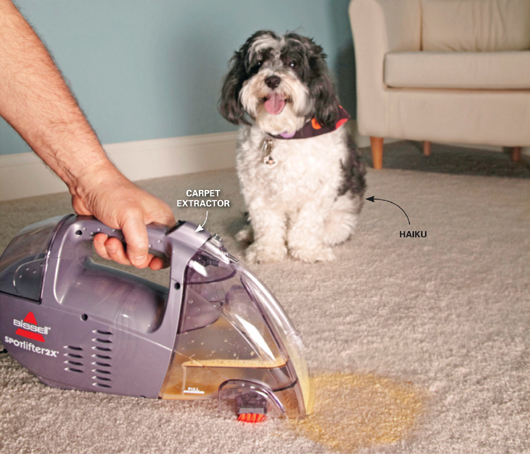
The best tool for the job
If your pet has frequent accidents, buy a “carpet extractor,” a small handheld vacuum designed to suck liquids out of carpets. Otherwise, go with the low-tech method shown below.
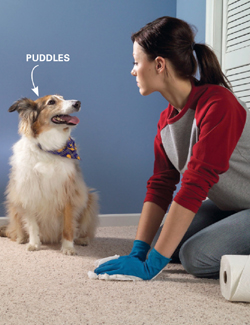
1. Blot the spot right away
Soak up the urine with white paper towels. Printed patterns can bleed color into the carpet. Press hard to soak up as much as possible. Then add about a quarter-teaspoon of dishwashing liquid to a cup of lukewarm water. But don’t use the detergent you use with your dishwasher.
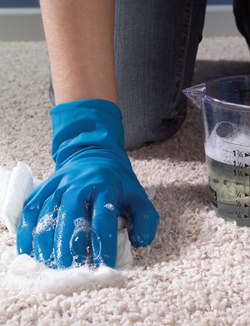
2. Apply the soapy water
Soak the area thoroughly with paper towels. Then blot the area with dry paper towels and repeat this wet-and-dry process at least once. Follow up with clear water to rinse out the detergent and blot the carpet dry again.
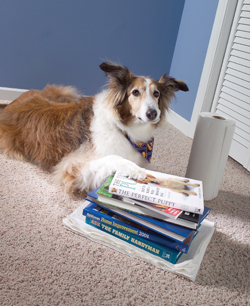
3. Dry the carpet
Apply one part white vinegar mixed with two parts water and blot the carpet one last time. Cover the damp area with about 20 layers of paper towels and a heavy stack of books. Change the towels again and again until they no longer absorb moisture.
Mask claw marks
Scratches on painted doors and woodwork can be erased with wood filler and a fresh coat of paint. Stained wood isn’t quite so easy to fix, but you can make the damage much less visible. The hard part is matching the existing wood tone. You may need to blend two stain colors. Gel stain is more forgiving than standard liquid stain; if you don’t like the look, you can immediately wipe it off and start over. Try a lighter color first, then add some darker stain if needed. If the stained area looks dull after the stain dries, add some sheen with wipe-on polyurethane.
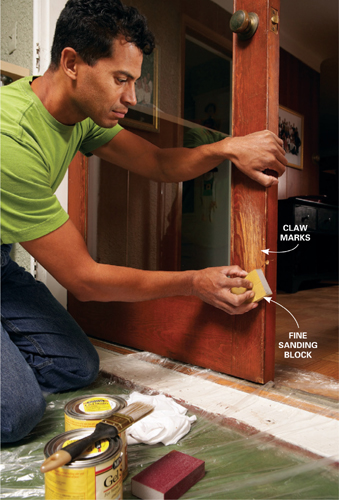
1. Smooth out the scratches
Sand the damaged area lightly with a fine sanding block or sponge. Your goal isn’t to completely remove the scratches, but to smooth out the damage.
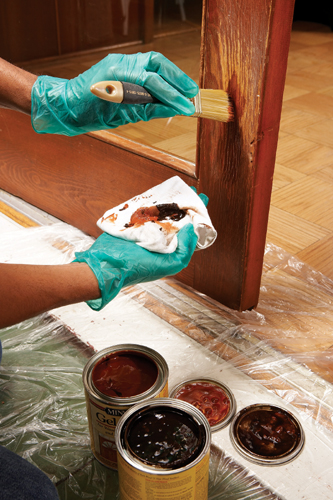
2. Stain the scratches
Apply gel stain with a brush. Start by applying the stain very lightly and gradually add more until you reach the tone you want.
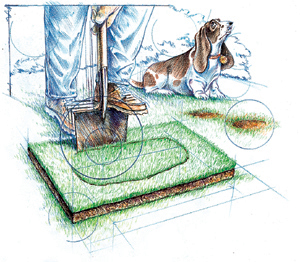
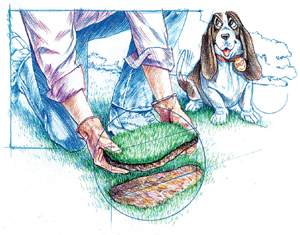
Perfect lawn patch
Here’s how to cut out damaged grass and replace it with a perfect-fitting patch: Lay a piece of sod over the damaged spot and slide through both the sod and the turf below with a spade. Dig out the bad grass and plug in the new sod. Water it daily for a couple weeks and it will blend invisibly into your lawn.
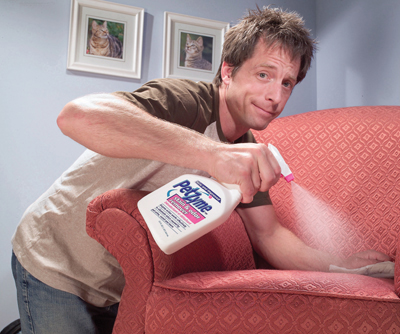
Enzymes really work
Cleaners that contain enzymes aren’t like other products. Their key ingredient is harmless bacteria, which eat the organic matter that causes stains and odors. Just spray it on. When the organic matter is gone, so are the stains and smells. And having eaten all their food, the bacteria die.
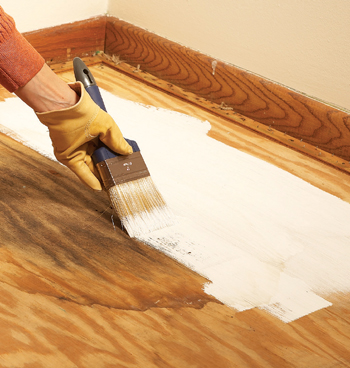
Time for new carpet?
If your old carpet has the lingering smell of pet urine, there’s a good chance that the odor has also penetrated the subfloor underneath. So it’s smart to treat the subfloor after the old carpet is out and before the new carpet goes in. Wet any stained areas with a 50/50 mix of water and bleach. After a five-minute soak, wipe up the water and let the floor dry. Then paint over the pet-stain spots with a stain-blocking primer such as Kilz, BIN or 1-2-3.
Voice of experience
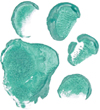
Pets and projects don’t mix
Home-improvement work zones are dangerous places for pets, with all those tools and chemicals around. Pets pose a danger to your home, too. When I took a break from a recent painting project, my helpful dog fetched my paintbrush for me and carried it across the house, dripping paint all the way.
Dave Jones, The Family Handyman Field Editor












